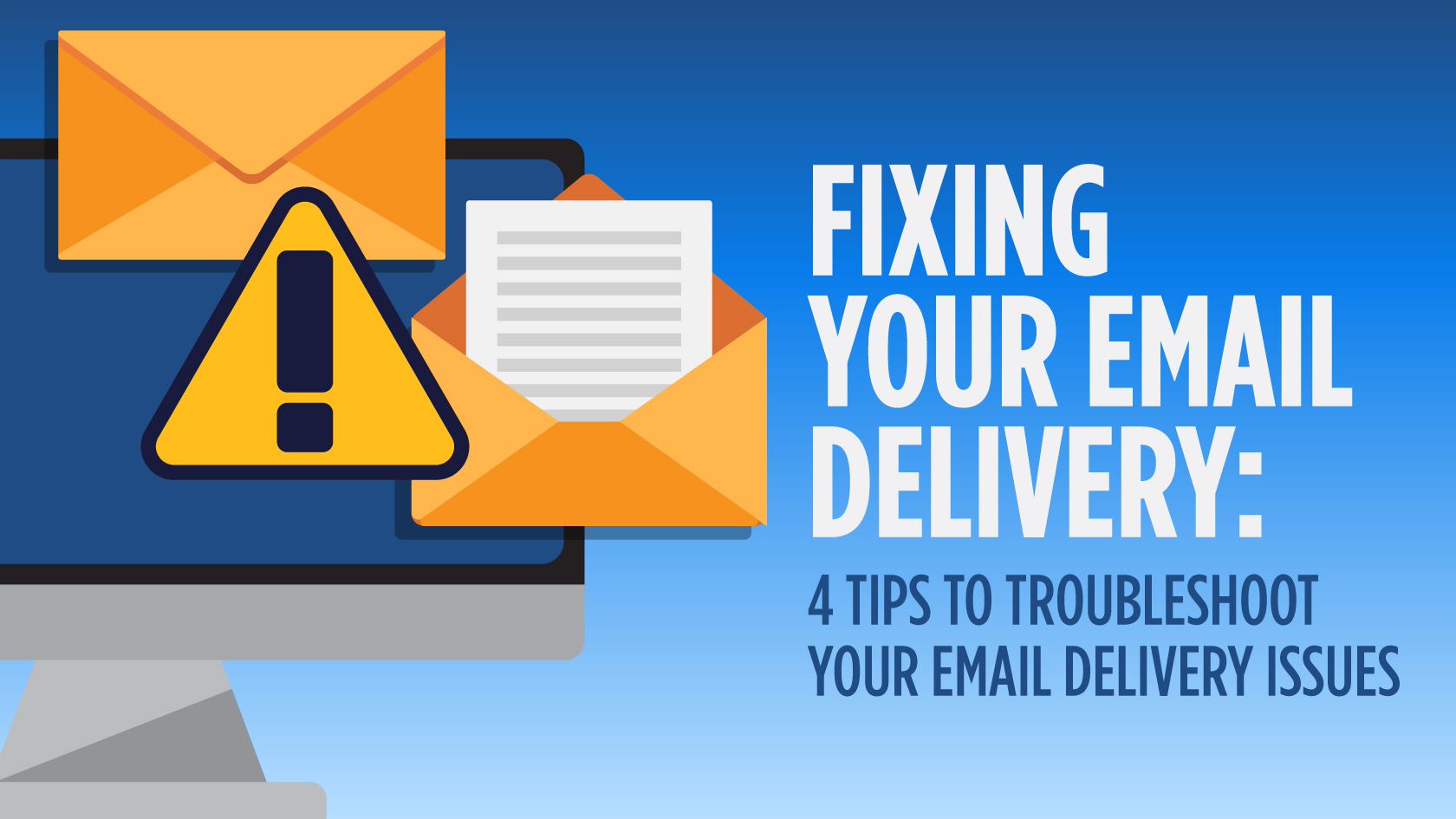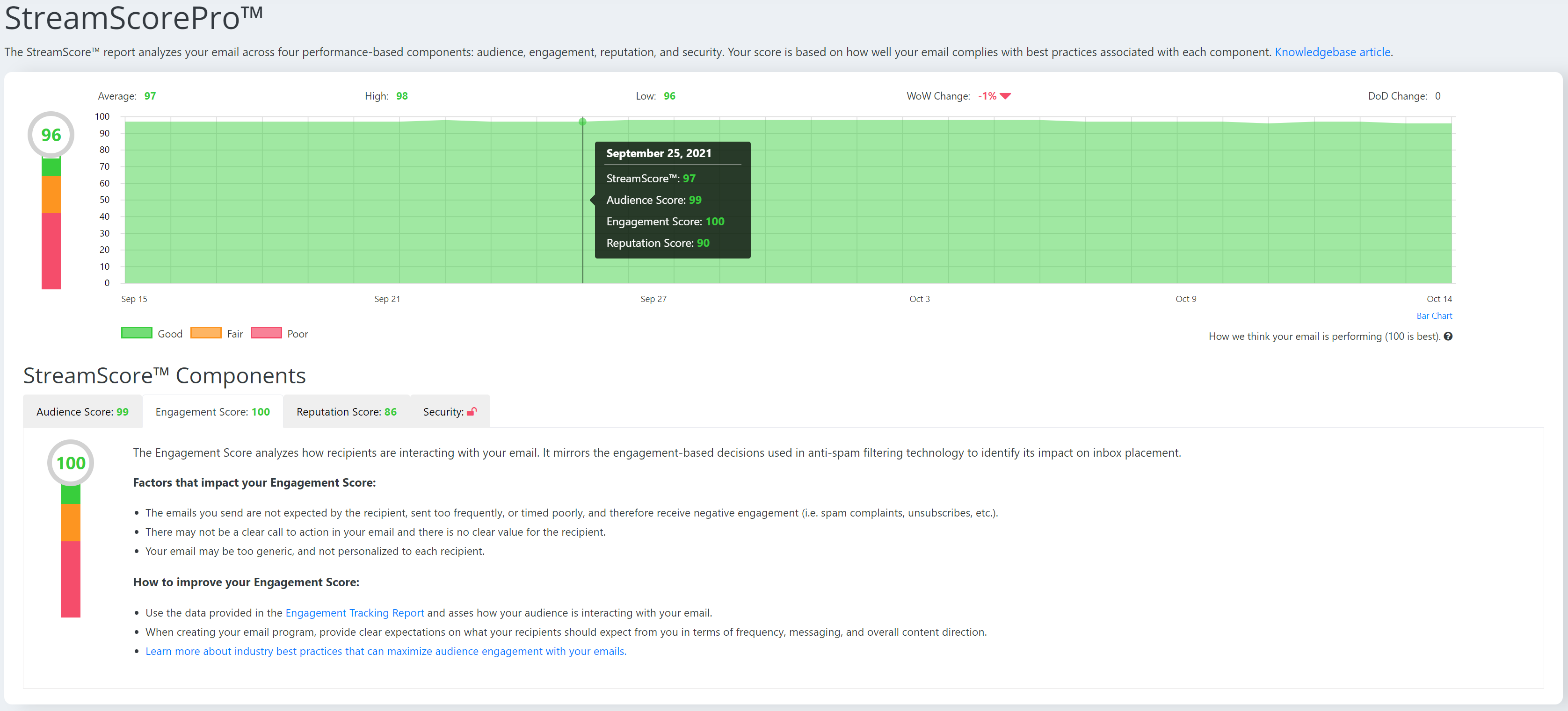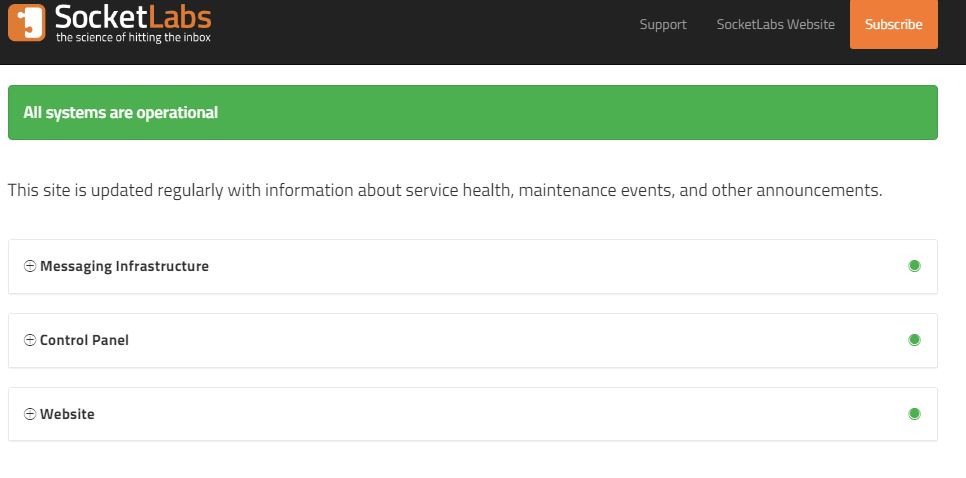
When it comes to sending high volume email, there is a thin line that can exist between doing it the right way and doing it the wrong way. Even if you have your email system completely buttoned up, email delivery issues can strike fast and completely ruin any hopes of successful sending. Whether you are operating your email infrastructure inhouse, or working with a not-so-great email service, common email delivery issues are less a question of ‘if’ and more a question of ‘when’. So, when something does inevitably happen, are you trained in troubleshooting email delivery issues to get your email system back on track?
If you’re trying to use email as a tool to communicate important information to stakeholders and grow your business, but have constant issues with email delivery, you’re in the right place. We are going to dive deeper into some tips you can use to troubleshoot email delivery issues and get your email back on track.
The Trouble With Email Delivery Problems
Learning how to troubleshoot email delivery failures is tough. As an email service provider, we know how hard it can be for businesses and developers to run their own email infrastructure. And the more email you want to send, the harder it gets. But when the stars align and everything starts working out, the payoff can be incredible for your business – that’s why you’re putting your blood sweat and tears into it.
Whether you’re delivering marketing emails as a leading revenue generator, or transactional emails helping your stakeholders accomplish their goals, email done right is a huge building block for any business. Unfortunately, for every organization that has mastered their email, there are tons of others who are struggling every day, troubleshooting email delivery issues, wasting time and money to get their system working.
Breaking Down Common Email Delivery Issues
A high-volume email delivery infrastructure is a machine. Think of it like the engine in your car: there are tons of moving parts, each playing a role in accomplishing the demands of the driver. If just one of these pieces isn’t functioning properly, it will either stop your car from performing or lead to a snowball of other problems down the road. Email, specifically email delivery, is exactly the same.
As with any car problem, the first step to troubleshooting email delivery issues is figuring out where the issue is stemming from. Here are a couple of areas to consider and the first steps you can take in troubleshooting your email delivery issues:
1. Is There Even A Delivery Issue? Dig Into Email Reporting and Analytics
Starting at the most fundamental point of email delivery issues, you need to first identify that you are having an issue. Seems obvious, I know, but plenty of senders trying to operate their own email infrastructure have limited insight into their email performance. The best way to avoid this issue is to work with an email service provider who provides a full reporting dashboard where you can monitor your email performance with analytics.

SocketLabs provides customers with a complete reporting dashboard that comes with a detailed breakdown of important metrics like delivered, opens, fails, clicks, unsubscribes, etc. In addition to this reporting, we also offer StreamScore, SocketLabs’ email performance monitoring and reporting tool that analyzes your email across numerous first and third-party data points to determine the overall health of your mail streams based on four key components:
- Audience Quality
- Engagement
- Reputation
- Authentication

2. Check Out Servers and IPs
Now that you have identified that there is in fact an email delivery issue that needs fixed, checking for SMTP server errors is often the first thing you want to do. Check to see if the servers are sending and receiving email as they were intended to do. Too often we see senders who send their own mail trying to figure out how to troubleshoot email delivery failures without ever looking at their servers. Common email delivery failures can often be tied back to the SMTP connection and can be diagnosed rather easily if you know where to look. For example, at SocketLabs we often see senders with SMTP connection issues that are stemming from their anti-virus software, issues with the mailbox provider, or a lack of compatibility with the application they are integrating with. Read more on how to fix email delivery issues that involve testing SMTP-connection problems here.
Aside from the server, you need to manage your IP address as well, and make sure you are following sending best practices to avoid raising any flags with mailbox providers. IP warming is essential in this process. If you are being blocked by mailbox providers and landing in spam, you may not have taken the necessary time to warm up your IP address to get off on the right foot.
As an email service provider, many customers who seek our services are looking for the ease of not having to manage, run, and maintain their own servers and IP addresses. Socketlabs is built around helping customers achieve their best deliverability and with over 10 years in the business we know the best way to manage email servers and IP addresses based on specific use cases to maximize each unique customer’s deliverability.

3. Analyze Email Content
The content that you send has a huge impact on how your email will perform and how many delivery issues you will run into down the road. While content involves the obvious components of what goes into your email like the copy, pictures, buttons, and graphics, content should also be thought of as the type of email you are sending like transactional vs. marketing.
If you are a high volume sender who delivers both transactional and marketing email, you will likely want to split these email streams to achieve maximum performance. Since marketing mail will typically perform at a different level than transactional mail, splitting streams will help improve deliverability and land more emails in the inbox.
To read more about optimizing your content in areas like text, subject lines, pictures, etc. read my blog on the topic here.
4. Evaluate Email Sending Practices
So you have your email infrastructure buttoned up, the servers are running full speed ahead, your content is fully optimized and ready to hit the inbox…there’s just one problem, you’re still not hitting the inbox. Next you want to check your sending practices. Rule number one is to never send to a purchased email list. Sending to a purchased list will lead to more complaints and negative engagement which will cause a severe decrease in deliverability. Build your lists organically through your website or some other form of lead generation and acquire good, qualified recipients who have given consent to receive your email. Checking those boxes alone will go a LONG way in helping you fix any deliverability issues you are dealing with.
Now that you have the recipients and you know who to send to, you need to make sure you don’t scare them away. Sending too many emails to someone over too short a period of time will send them running and all of your work will be worthless. Make sure you are doing the necessary testing to find out what works for your audience. Read more about this topic in my blog here.
Have You Passed The Email Delivery Test?
Alright, you made it to the end. So now when you are crying yourself to sleep at night trying to figure out how to troubleshoot your email delivery issues, you can take a deep breath, start from the top, and fix your problems. Track your data, go through the server, look at your content, and manage your lists.
And if it becomes too much for you to handle, talk to the email deliverability testers and professionals at SocketLabs who have been helping senders of all shapes and sizes solve problems exactly like this for more than a decade. The best part is, you can try SocketLabs completely free and we won’t even ask for a credit card. Check us out and see the difference.







